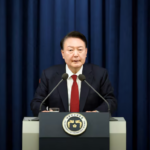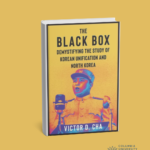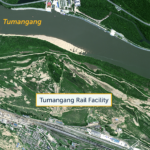January 15, 2025, by Victor Cha and Ellen Kim—
Yoon Suk Yeol, the lionized…
December 18, 2024, by Joseph S. Bermudez Jr., Victor Cha and Jennifer Jun—
The ongoing high levels of rail traffic and major modernization of rail facilities at Tumangang indicates that the strategic relationship between North Korea and Russia continues to grow... Close-up of the new canopy being constructed over the modernized rail station at Tumangang Rail…
December 11, 2024, by Victor Cha—
This graphic shows two metrics by which Donald Trump may measure his support for NATO and Indo-Pacific allies and partners based on his first term in office and his campaign statements... Donald Trump has also made very clear from long before he entered national politics that…
November 14, 2024, by Joseph S. Bermudez Jr., Victor Cha and Jennifer Jun—
Located 242 kilometers north of the demilitarized zone and only 65 kilometers from the Chinese border, the Yongnim Missile Operating Base is an undeclared ballistic missile operating ICBM base in Chagang Province... A close-up view of the two hardened drive-through missile checkout facilities, May 13, 2002 (Copyright…
October 28, 2024, by Victor Cha—
This first appeared as a…
October 14, 2024, by Joseph S. Bermudez Jr., Victor Cha and Jennifer Jun—
Satellite image of the Punggye-ri Nuclear Testing Facility acquired on October 4, 2024, a few days before the rapid escalation of tension in the peninsula, shows that the facility continues to be well maintained... Close-up view of the area around the portal to Tunnel No. 3 (South Portal). Click…
September 30, 2024, by Joseph S. Bermudez Jr., Victor Cha and Jennifer Jun—
Satellite images of the NK-China border indicate that trade between the two countries is gradually recovering to pre-pandemic levels. However, this restoration of trade was upended when unusually heavy rains struck the area in late July... Overview of the Dandong, Sinuiju, and Uiju Areas, September 8, 2024. (Copyright © 2024 by…
September 24, 2024, by Victor Cha—
In this groundbreaking book, the leading scholar and practitioner Victor D. Cha shines a light into the “black box” of North Korea and draws critical lessons for the possible reunification of Korea after many decades of division... 2024, Columbia University Press "[The Black Box] calls on privileged insights into North Korea. Peace,…
August 8, 2024, by Joseph S. Bermudez Jr., Victor Cha and Jennifer Jun—
Beyond Parallel reviewed satellite imagery of the Russia-North Korea border at the Tumangang-Khasan railroad crossing from early February to mid-July 2024, a few months before and a few weeks after Russian President Vladimir Putin’s visit to North Korea on June 18. The analysis between February and July 2024 shows a new railcar traffic pattern at the Russia-North Korea border.
July 29, 2024, by Joseph S. Bermudez Jr., Victor Cha and Jennifer Jun—
Despite the goal of advancing denuclearization of the Korean peninsula through leader-to-leader exchanges in 2018 and 2019, thermal infrared (TIR) imagery of the Yongbyon Nuclear Research Center around the summit dates reveals limited impact on Yongbyon’s overall operational status.










